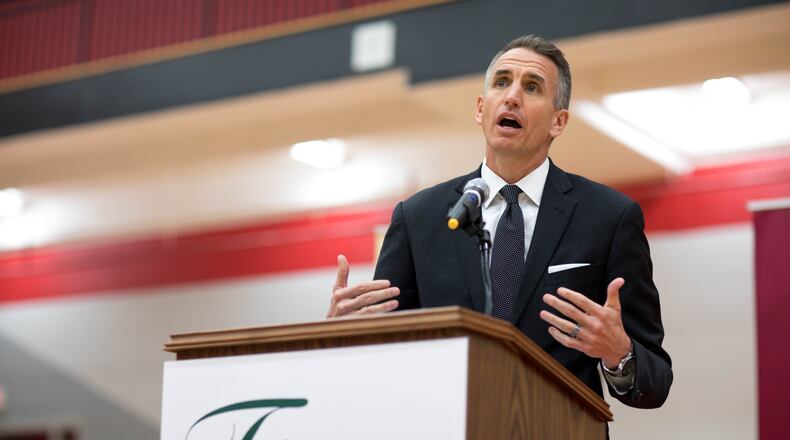Mahnaz Charania leads social impact curriculum and initiative at a K-12 Atlanta area independent school.
In this essay, she uses the resignation of Fulton Superintendent Jeff Rose to discuss the often-overlooked role of school boards in the stability and success of districts and schools.
An advocate and activist for education equity, Charania was named one of Atlanta Business Chronicle’s 40 Under Forty honorees for 2018, an award that recognizes young leaders who have have made significant career achievements and have demonstrated social responsibility within the community.
She also served as the director of strategic planning, research, and program evaluation for Fulton County Schools and worked for the Centers for Disease Control and Prevention in health equity and has been a visiting lecturer at Georgia State University.
By Mahnaz Charania
The news of Superintendent Jeff Rose’s departure from Fulton County Schools has left many parents shocked and others eager to gain clarity on why such a beloved leader would choose to depart after only two years in service.
According to the Broad Center, superintendents in the country's largest school districts stay on the job for about six years on average. A closer look at Fulton superintendent tenure indicates the district has rotated through three superintendents (one serving as interim) in just the last seven years.
Trends such as this should be very alarming – a lack of stability in district leadership is not something that makes for quality learning outcomes or confidence in a district’s ability to serve students well.
Around the nation, the public is being asked to step up and let their voices be heard to ensure the next round of elected leaders of our cities, states, and nation represent our diverse voices and needs. Locally, our actions need not be any different. We must first educate ourselves in the responsibilities we have to our public-school districts and then stay engaged to ensure that our voices are represented in the decisions and policies that affect our students and communities.
Every school district in our nation has a board of education – elected by the people (in rare cases, also appointed). Just like any other elected position, those on the board of education are elected by taxpayers to represent the collective voice of communities through their policy decisions around the health of our public-school systems. The second critical job boards have is the hiring and performance review of the district’s superintendent. Even in this process, good practice suggests community input is critical and should be used to ensure the incoming leader is well positioned to succeed in the context that is unique to each school district.
School board members (aside from our children’s teachers and principal) have the greatest influence on our students’ education experiences because they decide how public-school funds should be spent and they establish policies that inform the practices that we, as parents, see in our public schools. These individuals are elected by the people and they represent each of us – the current and former parents, the students, and every community member that resides in their district. The responsibility entrusted to these select individuals is to set aside partisan ideas and pursue what is best for the students of the district.
The primary responsibility of school board members is to serve the needs of the community they serve and represent. To better assess whether this is happening in your community and district, consider the following questions:
Is the board responsive to the community's questions and concerns, particularly around high-impact issues (such as decisions around superintendents)? Simply holding community meetings isn't enough. Are they willing to act based on feedback expressed by the community?
Is the board forthcoming and transparent about important decisions that can affect confidence in and the quality of our schools? Is the board willing to bring some clarity and confidence to the public's understanding of why certain decisions are being made?
How do the board members communicate with and to each other during board meetings? These meetings are often available to view live or archived on the district's website. Are they speaking in a thoughtful, solution-focused, and collaborative manner?
Looking in the schools, are students receiving the support and services they need or are there practices happening that support a subgroup of students consistently better than the other? This speaks to the type of policies that your board may be supporting.
Is there high turnover in the school or district leadership (e.g., principals, superintendents, senior administrative staff)? This is often a sign of structural and systematic barriers that boards of education should be held accountable to address.
The future of our education system is not the responsibility of a few select people, rather it is a community issue and can only be solved by community involvement. Start by visiting the website of your local school district (type ‘board of education’ in the top right search box). Put the next board meeting on your calendar and show up. Identify the board member in your cluster of schools and email them to introduce yourself. Make sure your voice is being heard and a commitment to action is being taken. Listen to their words. Ask them questions to assess if their values and beliefs about how schools should serve students aligns with yours. And, next time they are up for re-election, vote.
About the Author
The Latest
Featured




